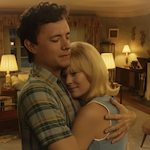 Hey guys, it’s me, member of a small club of people who enjoy post-2000 Robert Zemeckis, the guy who has gotten carried away with digital technology and always finds something weird to do with it, whether or not it works, and whether or not society approves (which it usually does not). HERE is a movie that would only, maybe could only be made by that person. And that’s what I want to see out of art.
Hey guys, it’s me, member of a small club of people who enjoy post-2000 Robert Zemeckis, the guy who has gotten carried away with digital technology and always finds something weird to do with it, whether or not it works, and whether or not society approves (which it usually does not). HERE is a movie that would only, maybe could only be made by that person. And that’s what I want to see out of art.
The bigger selling point, to the extent that any effort was made to sell it when it came out last year, is that it’s a FORREST GUMP reunion. It stars Tom Hanks (THE LADYKILLERS) and Robin Wright (HOLLYWOOD VICE SQUAD) and he wrote the screenplay with Eric Roth (YEAR OF THE DRAGON) and obviously the score is by Alan Silvestri (THE DELTA FORCE). Like FORREST GUMP it tells a story that seems to be about American culture at large, because it takes place over a stretch of years with many emblematic incidents touching on moments in history and representing societal changes. But it does this with a very particular gimmick, taken directly from the graphic novel of the same name by Richard McGuire: it’s told from one static camera shot. It spans from the time of dinosaurs to the present, but the camera just sits there in the same spot the whole time.
(Actually, at times it kinda reminded me of ADULT SWIM YULE LOG.)
For a tiny slice of that period, but most of the movie, there’s a house there, so we’re in a living room, with a window looking out. Hanks plays Richard Young from his teenage years on, so a few scenes use the latest in de-aging technology. It’s technically generative a.i., and from what I understand it involves scanning images of Hanks from throughout his life and using those to create a younger version of him in real time as he does motion capture. If that’s correct I don’t think it qualifies for my usual ethical objections to a.i., but I still don’t like it, because I just don’t think it looks as natural as other de-aging I’ve seen, such as in INDIANA JONES AND THE DIAL OF DESTINY. If that involved painstaking frame-by-frame touch-ups, that might explain the difference.
Wright also appears to age while playing his girlfriend Margaret, who then becomes his wife, and eventually his ex-wife. Some of their marital conflict comes from sharing the house with Richard’s parents Al (Paul Bettany, PRIEST) and Rose (Kelly Reilly, FLIGHT). Margaret wants out of there, but for years they have a hard time affording it, then Al decides to give them the house. An act of kindness that is also incredibly stifling.
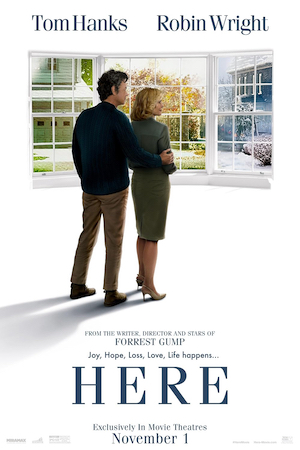 It was obvious from the trailer that there was gonna be a big emotional trigger for me involving dementia. The portrayal alternates between very familiar to my experiences and not believable to me, but of course there’s a dramatic logic to bringing the loss of memory into this story about all the things that happen in one place, many remembered, more forgotten. Yeah, this one’s definitely a crier, but for me it was overwhelming for reasons other than any other specific tragedy. The depictions of families going through different things in different time periods just got me thinking of family members I’ve lost. It kind of has the feeling of looking through an old photo album, seeing the same people at different Christmases, the hair and the sweaters and the furniture changing.
It was obvious from the trailer that there was gonna be a big emotional trigger for me involving dementia. The portrayal alternates between very familiar to my experiences and not believable to me, but of course there’s a dramatic logic to bringing the loss of memory into this story about all the things that happen in one place, many remembered, more forgotten. Yeah, this one’s definitely a crier, but for me it was overwhelming for reasons other than any other specific tragedy. The depictions of families going through different things in different time periods just got me thinking of family members I’ve lost. It kind of has the feeling of looking through an old photo album, seeing the same people at different Christmases, the hair and the sweaters and the furniture changing.
We see some real arcs, like Al evolving from a bitter, alcoholic asshole after the war to a softened, kinder person after suffering loss and illness and being forced to depend on his son. But since we’re crossing oceans of time with a bunch of different families, many of the most monumental events of their lives come at us rapid fire. In one sense that dilutes the impact of these moments, but it also creates a cumulative effect of seeing so many of the things that everyone deals with, one after another. It feels kinda like becoming a cosmic being, taking a step back and getting a look at humanity from outside of time.
I was aware of the format going in, but not entirely. What makes this especially interesting is that it’s not linear. We see dinosaurs, the ice age, the life of a Native American couple before the place was colonized, the building of the house across the street, the building of the house Richard will live in, families that lived there before and after him, but not always in order. The scenes dance around between different years, sometimes using inset panels to show different portions of the space at different times, all at once. This draws comparisons and contrasts between the eras – we experience the Spanish flu, and then it’s much later and people are wearing masks and we realize it’s COVID-19. We see Richard dressed as Benjamin Franklin at a Halloween party, and we see the actual Benjamin Franklin (Keith Bartlett, PREY FOR THE DEVIL) when his son William (Daniel Betts, ALLIED) owns the fancy-ass estate across the street.
My favorite inhabitants of this house are pinup model Stella Beakman (Ophelia Lovibond, ROCKETMAN) and her husband Leo (David Fynn, LEAP YEAR), who invents what becomes the La-Z Boy chair (you know how Zemeckis loves fictionalizing who invented things). They own the house in the ‘40s before the Youngs, and they just seem like fun, quirky people, and Stella likes to put on a record and dance around while she vacuums. So it’s kind of deep when an inset panel fast forwards to 2020 and there’s a Rumba cleaning that room. That family also has a maid (Anya Marco Harris), but my guess is that neither of those luxuries would make Stella’s life better. She’s having so much fun vacuuming!
Of course there’s a certain amount of “American Dream” exploration here, with different classes finding different ways to afford home ownership in this choice spot with a window faced directly at the estate of the son of a Founding Father. The entrepreneur who moves away to California making room for the WWII veteran, whose son works hard and follows the rules but can’t seem to fucking afford his own place. It never deals directly with racism, but there appeared to be a few Black slaves present during construction of the Franklin estate, and generations later a Black family, the Harrises (Nicholas Pinnock, Nikki Amuka-Bird and Cache Venderpuye), finally own the house. I think they made the place look the nicest, but also I noticed that they got the fuck out of there faster than any other family.
Original author McGuire first used the idea in a six page comic published in Art Spiegelman’s Raw magazine in 1989. It is considered a groundbreaking use of the medium and influential to the work of other cartoonists, including Chris Ware. In 2014 McGuire reinvented it as a 300-page, full color book. The book also includes some panels of “projected futures and species,” but Zemeckis decided against that (though my friend Matt Lynch found a clip where the house is destroyed in a tsunami).
Unsurprisingly, Zemeckis came up with other ways to play around with this set up. We see Al with his movie camera at Christmas, then years later we see him showing home movies to the grandkids and we revisit that scene from a camera angle other than this one we’ve been stuck on. There’s a thrilling moment late in the movie when a dresser with a mirror attached is carried through and we see in the reflection that holy shit, the kitchen is over there. Okay, the place where Al always had a drink seemed kind of weird like he was just facing a wall, but now that I see the rest of the room it seems a little more sensible.
One complaint: in the later years we see the house stripped, with some wires coming out of a hole in the wall, and I thought, “Man, it’s gonna be exciting when that cable gets hooked up,” but we never do see that. I suppose there wasn’t enough time in between the more consequential events. There’s an extinction, a conception, a birth, a couple deaths, a couple weddings, a couple funerals that all happen on this spot (which does feel like a stretch sometimes). For me the biggest weakness is a side effect of the premise. In order to keep Richard in the picture for a long time the story has to make him pretty pathetic. It’s just depressing that he spends most of his life living in this one house, especially since our view of it is this one room. A major milestone in his marriage is when he concedes to Margaret’s demand to buy a nicer couch for them to live on in his parents’ house. And he’s still in that damn place when she leaves him.
I know there are different interpretations of what Zemeckis’ world view is, especially in regards to FORREST GUMP, but I don’t think this reflects the listen to your mama, follow the rules kind of values some people attribute to that. Looking back later on, Richard sees that his biggest mistake was abandoning painting when he took on a bank job to be a responsible husband and father. He only becomes happy when he’s free of his family and dedicated to art projects. And though he and Margaret never stop loving each other, it’s portrayed as a natural and good thing that they grow apart and decide to split up. It seems to improve them both as people. And then thank God they get out of that fucking house. It’s gotta be haunted at this point.
I wouldn’t rank HERE very high in the Zemeckisography, but I think it’s an interesting movie. There’s probly a limit to how good a story can be within the framework of this gimmick, but they ended up on the higher end (says me – most critics disagree, calling it cloying bullshit). It was an idea worth trying for the one guy who would try it. Keep ‘em coming, Bobby Z.

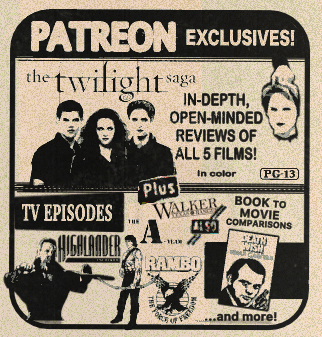

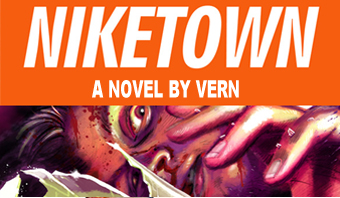

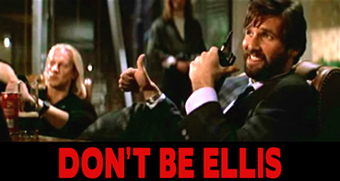










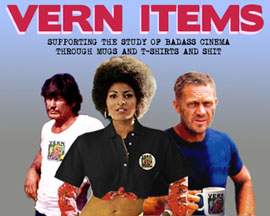








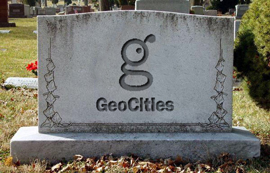
February 4th, 2025 at 7:41 am
The one thing that was really bothering me since I saw the first trailer was: “Isn’t this just the Casey Affleck is a ghost movie?”
The movie comes out, the vast majority of reviews call it cloying bullshit. And still I’m left with the feeling like ‘I just saw this movie, but I seem to be the only one’.
FINALLY, after reading like 50 reviews, someone says ‘this movie is cloying bullshit, and it rips off the Casey Affleck is a ghost movie*’, and I feel like I can move forward.
*in all fairness, while this review was tearing the movie to shreds, I felt calling it a ‘rip-off’ was maybe a little much. It’s very possible the people behind ghostly Casey read the same graphic novel and ripped that off to avoid paying for rights, while Zemeckis chose the more honorable path.